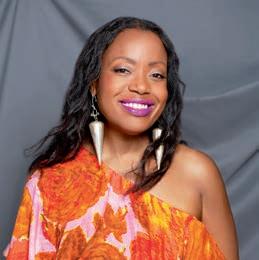
2 minute read
TRACY REESE
A talent for sewing and drawing landed Tracy Reese, BFA Fashion Design ’84, a spot at Parsons at a special time. The Detroit native came to New York in the early 1980s, when the school was still situated in the Garment District. “Parsons was in the thick of it!” says Reese.
Reese recalls taking classes in draping, patternmaking, and textiles. She remembers wearing a lab coat and white gloves while examining rare garments in The Metropolitan Museum of Art’s costume archives. Her student designs were critiqued by Donna Karan and other fashion giants. Classmates like Marc Jacobs became friends and collaborators.

After graduation, Reese built a successful business and made a name for herself. She ran her eponymous fashion line in New York City for 23 years, winning accolades and dressing celebrities including former First Lady Michelle Obama.

In 2018, Reese decided to close her business. Having seen the effects of fast fashion and “the constant need for newness” on people and the planet, she felt that “the old system doesn’t work anymore.” And she missed her hometown.
The time seemed right to move back to Detroit and start a venture involving more sustainable and equitable practices. “My hometown has so much heart, grit, and opportunity,” says Reese. It also has a thriving creative community to tap into. Reese named her initiative Hope for Flowers.
Reese still designs beautiful clothes featuring her trademark striking colors and flattering cuts, all while redefining the way a fashion business operates. Her company makes community outreach a priority, offering free art classes for young people and workshops for adults on everything from jewelry making and bookbinding to composting and gardening.
“Hope for Flowers expresses my hopes for the planet,” says Reese, “and for the seed of creativity in us that needs to be nurtured.”




Students ELIZABETH SANDERS
Real-Time Curator

Elizabeth Sanders began the MA History of Design and Curatorial Studies program in 2019, when planning for the exhibition Design and Healing: Creative Responses to Epidemics at Cooper Hewitt, Smithsonian Design Museum, was underway. Part of a curatorial fellowship her program maintains with the museum, the project was a dream come true for Sanders. Then COVID-19 hit.
The Cooper Hewitt team, headed by celebrated designer and curator Ellen Lupton, emergency physician Bon Ku, and the MASS Design Group, switched gears as the world was upended. Sanders began collaborating with the curatorial team over Zoom.
“I love sinking my teeth into a topic,” says Sanders, “and the pandemic offered design researchers a rich field to explore.” Curators looked at the design of real-time data and objects related to the virus—everything from face masks and protective headgear to a 3D printed valve that turns a scuba mask into a ventilator. The exhibition also addressed epidemics throughout history and the innovations they spawned.
Sanders’ contribution centered on an exhibition section titled “Visualizing the Pandemic,” which focused on social inequality. Especially compelling was her work with a New York Times team creating data visualizations to convey the unfolding effects of COVID-19 on the city. Sanders also continued conducting research for a thesis on COVID-19’s impact on Toronto housing and the emergence of encampments.
Sanders contributed to Health Design Thinking: Creating Products and Services for Better Health, a book employing graphics to show health disparities between urban populations.









